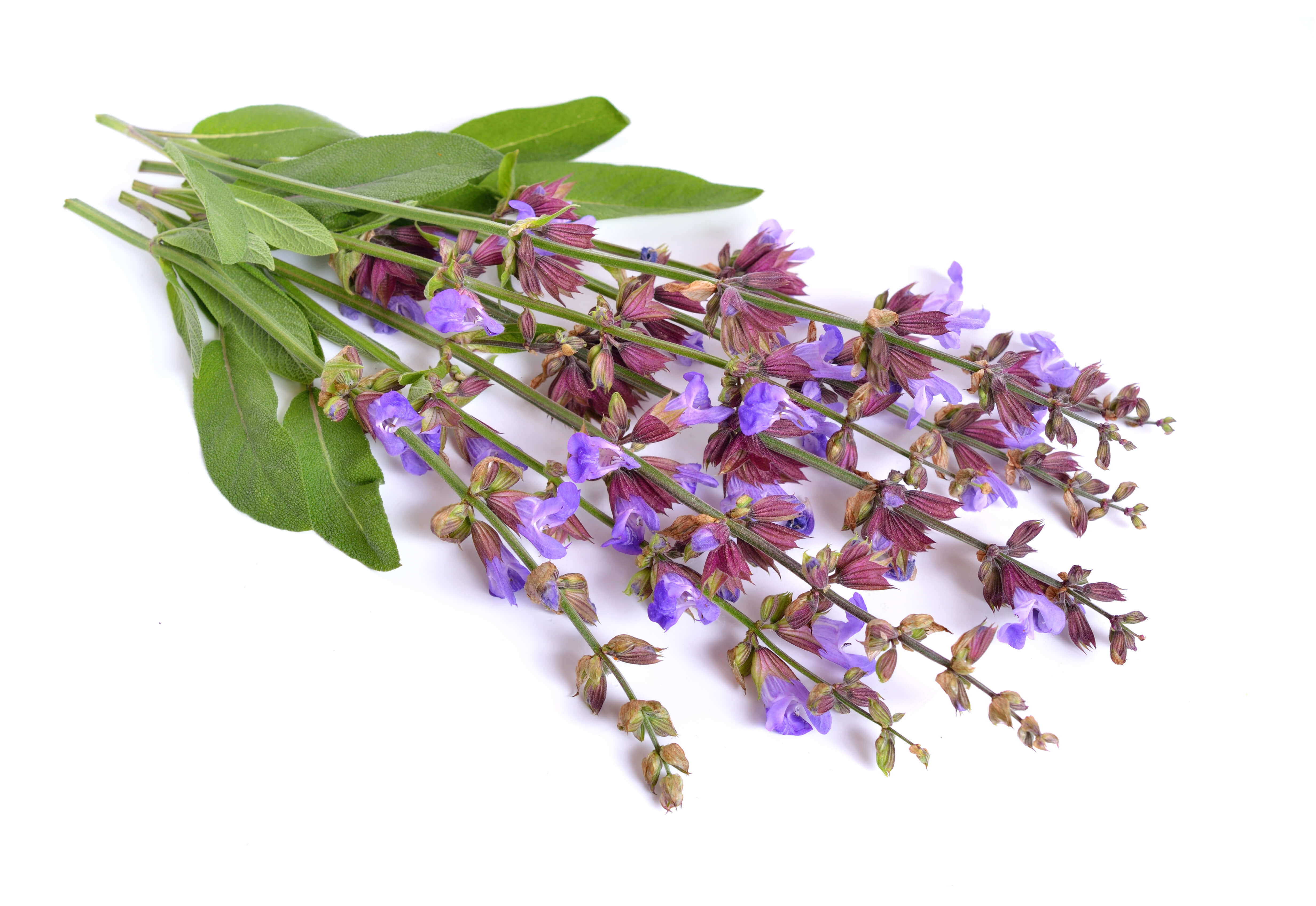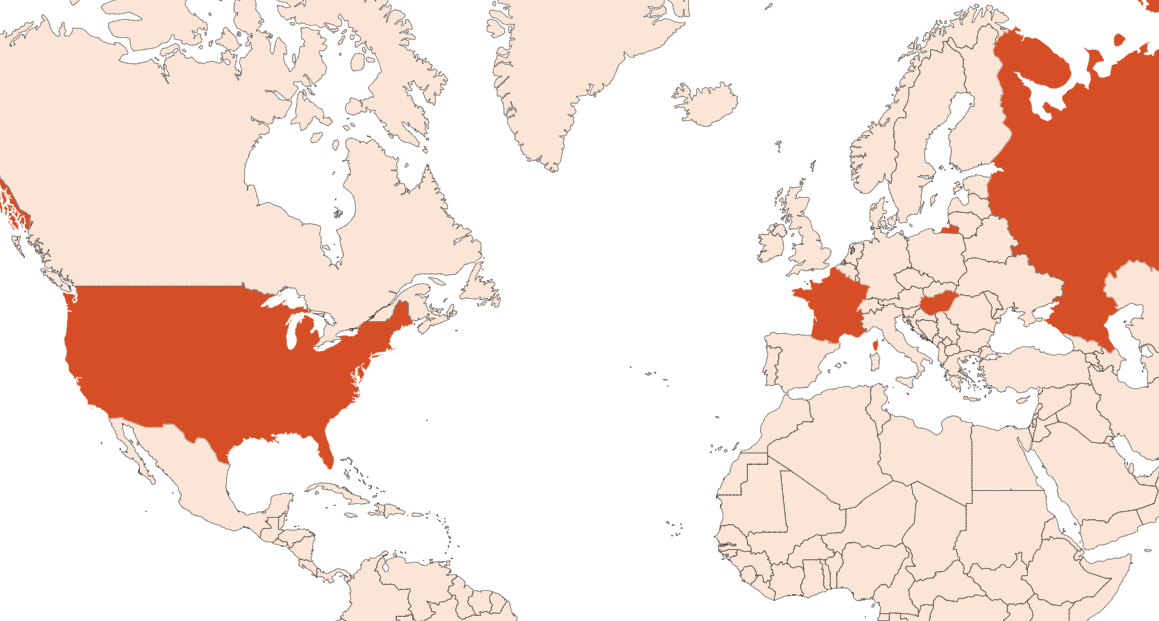Dalmatian Sage EO
Naturelle
Herbal > Camphoric > Coniferous > Dry Woods

Crédits photo: ScenTree SAS
Latin name :
Salvia officinalis
Botanical profile :
Dalmatian sage is a spiecies of plant of the Lamiaceae family (as basil, rosemary, minth and patchouli) and of the genus Salvia.
Geographic origin :
Originally from Eastern Asia (Middle-East and Turkey), dalmatian sage is now cultivated mainly in France, Russia, USA, Bulgaria and Hungary.
Chemotypes :
The genus Salvia is composed by almost 1000 species, which can be classified according to their composition:
Linalyl Acetate and other esters sages : Clary sage EO / Clary Sage Absolute (Salvia sclaréa - Europe), Doris sage (Salvia dorisiana - rich in Perillyl Acetate) and Sardinian sage (Salvia desoleana - rich in Linalyl Acetate and Terpinyl Acetate).
Eucalyptol or Camphor sages : Including the Lavender-leaved sage (Salvia lavandulifolia), the Three-lobed sage (Salvia fruticosa), the Bengal sage (Salvia bengalensis - India and Pakistan), the White sage (Salvia apiana - California) and the Dandelion leaved sage from the Atlas (Salvia ancheri).
Thujones sage : Including the Dalmatian Sage EO (Salvia officinalis) and all its varieties. Apple sage (Salvia pomifera from Crete, with Beta-Thujone).
Bisabolol or Nerolidol sages : Including the two chemotypes of the blue mountains sages of South Africa (Salvia stenophylla).
Beta-Caryophyllene and other sesquiterpenes sages : Such as the Spanish sage (Salvia hispanica - Beta-Caryophyllene), the Glutinous sage (Salvia glutinosa - γ-Muurolene), the Gentian sage (Salvia tomentosa - Beta-Caryophyllene and Borneol) and the Pineapple sage (Salvia elegans - Central America, with Beta-Caryophyllene and trans-β-Ocimene).
Diterpenoids sages : Such as the Chinese sage (Salvia miltiorrhiza), whose roots are extracted for their anti-inflammatory and antioxidant properties.
Linalyl Acetate and other esters sages : Clary sage EO / Clary Sage Absolute (Salvia sclaréa - Europe), Doris sage (Salvia dorisiana - rich in Perillyl Acetate) and Sardinian sage (Salvia desoleana - rich in Linalyl Acetate and Terpinyl Acetate).
Eucalyptol or Camphor sages : Including the Lavender-leaved sage (Salvia lavandulifolia), the Three-lobed sage (Salvia fruticosa), the Bengal sage (Salvia bengalensis - India and Pakistan), the White sage (Salvia apiana - California) and the Dandelion leaved sage from the Atlas (Salvia ancheri).
Thujones sage : Including the Dalmatian Sage EO (Salvia officinalis) and all its varieties. Apple sage (Salvia pomifera from Crete, with Beta-Thujone).
Bisabolol or Nerolidol sages : Including the two chemotypes of the blue mountains sages of South Africa (Salvia stenophylla).
Beta-Caryophyllene and other sesquiterpenes sages : Such as the Spanish sage (Salvia hispanica - Beta-Caryophyllene), the Glutinous sage (Salvia glutinosa - γ-Muurolene), the Gentian sage (Salvia tomentosa - Beta-Caryophyllene and Borneol) and the Pineapple sage (Salvia elegans - Central America, with Beta-Caryophyllene and trans-β-Ocimene).
Diterpenoids sages : Such as the Chinese sage (Salvia miltiorrhiza), whose roots are extracted for their anti-inflammatory and antioxidant properties.
Extraction process :
The Dalmatian sage is a short-lived plant, which can measure up to 1.60 m in cultivation. At the beginning of spring, sage fields are perpetuated by sowing the seeds of the plant. Harvesting takes place during the flowering period in August. Harvesting is mechanical: a tractor cuts, crushes and collects the fresh plants before taking them to the extraction plant.
The leaves can be extracted fresh or dry. The process used then depends on the efficiency and yield with which the essential oil is to be obtained. Extraction is carried out by steam distillation for one or two hours under high steam pressure. The essential oil is recovered at the outlet of the refrigerant, by settling over the sage hydrolate. If this extraction is carried out on the fresh product, the yield is 0.1%. If it is carried out on dry leaves, the yield is then 0.2%.
A sage absolute can also be obtained by extraction with volatile solvents. The resulting extract has a much more herbal smell, keeping aromatic and camphorated facets.
The ISO 9909 standard specifies certain characteristics of Dalmatian sage essential oil in order to facilitate the appreciation of its quality.
The leaves can be extracted fresh or dry. The process used then depends on the efficiency and yield with which the essential oil is to be obtained. Extraction is carried out by steam distillation for one or two hours under high steam pressure. The essential oil is recovered at the outlet of the refrigerant, by settling over the sage hydrolate. If this extraction is carried out on the fresh product, the yield is 0.1%. If it is carried out on dry leaves, the yield is then 0.2%.
A sage absolute can also be obtained by extraction with volatile solvents. The resulting extract has a much more herbal smell, keeping aromatic and camphorated facets.
The ISO 9909 standard specifies certain characteristics of Dalmatian sage essential oil in order to facilitate the appreciation of its quality.
Major Components :
Alpha-Thuyone + Beta-Thuyone (35–50%)
Camphor (12–24%)
Eucalyptol (9–15%)
Beta-Pinene (2–10%)
Viridiflorol (4-10%)
Camphene (4-7%)
Alpha-Pinene (3–6%)
Borneol (2-5%)
Beta-Caryophyllene (2-5%)
Bornyl Acetate (1-2%)
Cis-3-Hexenol (traces)
Camphor (12–24%)
Eucalyptol (9–15%)
Beta-Pinene (2–10%)
Viridiflorol (4-10%)
Camphene (4-7%)
Alpha-Pinene (3–6%)
Borneol (2-5%)
Beta-Caryophyllene (2-5%)
Bornyl Acetate (1-2%)
Cis-3-Hexenol (traces)
- Uses in perfumery :
- Unlike Clary Sage EO, Dalmatian sage is regulated because it contains a high level of thujone. It is generally used in small quantities (limited by the level of thujone) in aromatic and camphorated accords. It is also associated with woody notes of conifers and citrus notes of the same botanical genus.
- Other comments :
- Dalmatian sage has long leafy stems, with violet floral heads. The leaves are containg the essential oil.
- Volatility :
- Head/Heart
- Appearance :
- Pale green liquid
- Stability :
- Terpenes present in this essential oil are subjected to polymerization under the effect of a strong oxydation.
- Price Range :
- €€€
- Aromatherapy :
Informations provided below are taken from reference works in aromatherapy. They are given for information purposes only and can not constitute medical information, nor engage the responsibility of ScenTree.
Dalmatian sage contains a high rate of thujone, it has anti-microbial, anti-infectious and anti-viral characteristics. The extracts of Dalmatian sage are recommended for use in menopausal disorders as well as for blood circulation disorders.
The high content of Alpha-Thujone and Beta-Thujone induces a high toxicity for this essential oil which can lead to epilepsy in the case of high doses. Pregnant women should therefore avoid this plant in particular.

Crédits photo: ScenTree SAS
- EINECS number :
- 84082-79-1
- FEMA number :
- 3001
- Allergens :
- D-Limonene
- IFRA :
- This ingredient is not restricted
To learn more about IFRA's standards : https://ifrafragrance.org/safe-use/library
ScenTree is solely responsible for the information provided here.
Do you sell any of the raw materials? Would you like to let our users know?
Send an email to fournisseurs@scentree.co to learn about our advertising opportunities.
